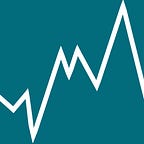Are You Ready Yet? When should you progress from Demo to Live Trading?
My students often ask me ‘what’s the average length of time to master trading on a demo account?’ or when will they personally be ready to progress from their demo account to a live account? It is imperative for any newbie trader to start practicing on a demo account first before launching themselves into trading on a live account. The average time period to master a demo account is about 3 months but this can depend on each individual, what they want to gain from the demo trading and have they achieved their goals they have set themselves. I have seen traders struggle with the transition from a demo account to a live account, the challenge is ‘fear’, the fear of the unknown. Most successful traders have experienced the same thoughts, yes it can be difficult but if they made the transition then you can do too.
Three key points to master in demo trading:
- You need to have mastered your trading platform, tested every feature it has, and know what the function of each button does. It’s no good when you are in the middle of a live trade, not knowing what button to press etc. This shows you are not ready to progress to a live account.
- There are different order types depending on the market you trade. Market orders* are the classic orders the majority of new traders will use and there are Limit orders*. You need to be able to master these different order types, what can you do when the prices reaches the orders and how to place a stop loss. You need to be able to execute your trades, the demo account allows you to do that with no consequences.
- You must pay attention to how and when the markets reacts, how a news announcement can affect the price movements, what causes a price to move so quickly and why doesn’t the price move etc. Market conditions continually change, you need to be prepared to handle those changes when they occur.
Key points you need to know regarding live trading that don’t occur in demo trading:
- Handling the pressure once you have placed a trade and the anxiety or ‘fear’.
- Avoiding good trading opportunities as to not wanting to experience a loss.
- Trading out of greed on the exit, when you should have closed that profitable trade earlier.
- Emotions can result in you staying in a losing trade longer and cause you to close a trade too early reducing your profits.
- Entering a trade too soon as you are keen to make money, known as ‘FOMO’ fear of missing out.
Progressing from Demo to Live Trading:
It is imperative that you only trade with a small amount of money, so that if a loss occurs you are in a position to withstand that loss. Of course no one wishes for a loss but it could take you a good few trades to get accustomed to live trading and during that time you need to be able to learn from your mistakes. It may feel like you are taking a step backwards starting out with small amounts however, you cannot allow anxiety to play a part in your decisions. When the time is right, and you have gained more knowledge and confidence, you can increase the amounts you are trading. The process from demo to live trading should now be much smoother, but remember we must not get complacent the markets are constantly changing we still have to be prepared for any eventuality.
* Market orders are the classic orders majority of new traders will use. When a trader selects the ‘buy’ or ‘sell’ button on their trading platform, it means the market order has been placed and the trade has been completed at the best current price. Therefore, the market order has allowed you to instantly make the trade as soon as you press the button.
* Limit orders are agreed at a different price from the current available price. E.G: Microsoft is listed at $200, if you wanted to purchase it when the price declines to say $180. You will set a limit buy order at $180, therefore when the price does decline to $180 your order will be carried out thus permitting you to purchase Microsoft at $180.
These are the four different limit orders:
- Buy Limit — Buying below current price
- Sell Stop — Selling below current price
- Sell Limit — Selling above current price
- Buy Stop — Selling above current price
These limit orders enable the trader to place their trade order at a precise price, without the need for the trader to sit and wait to arrive at that price.
